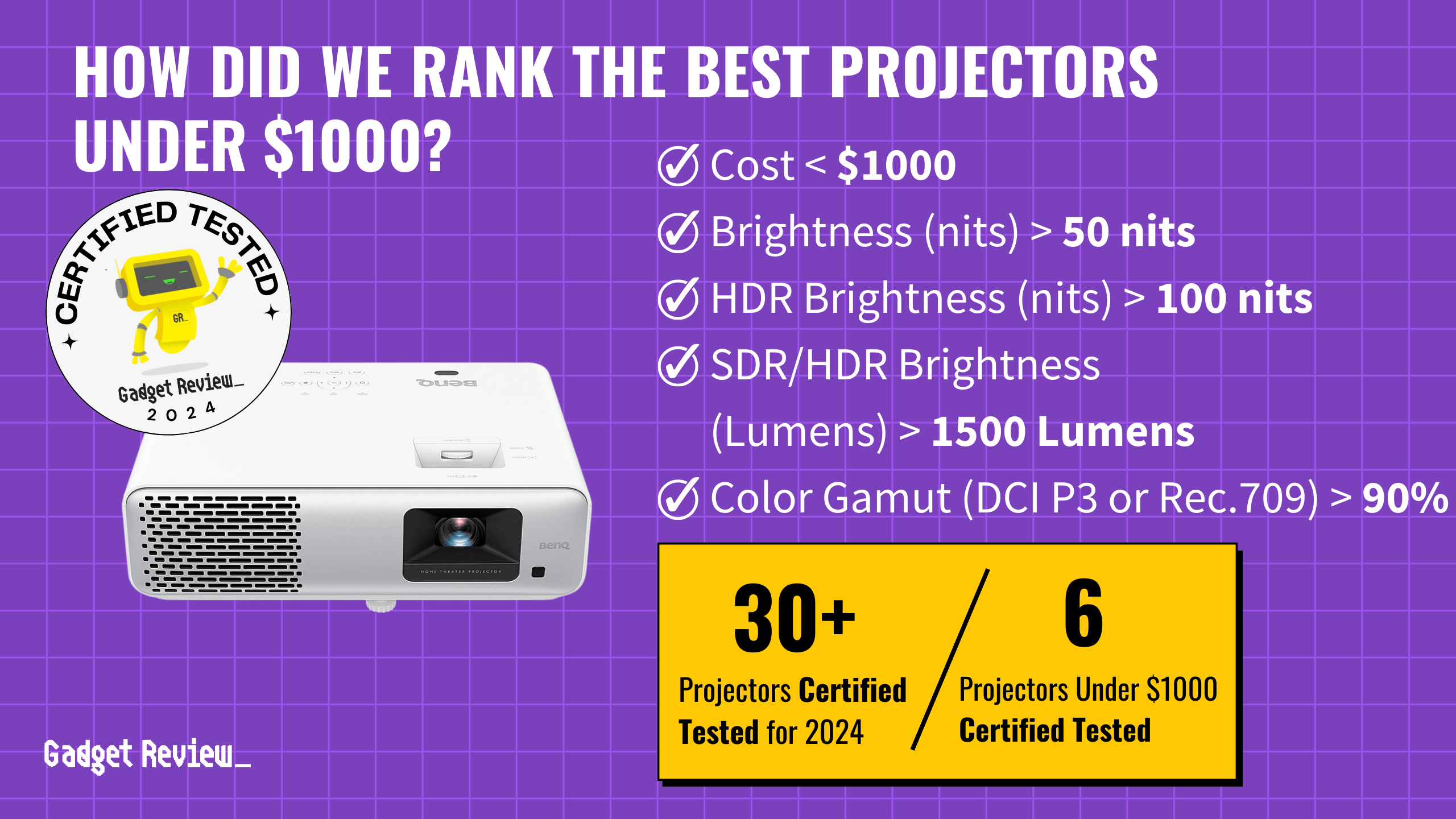Are you planning the perfect projector setup and are stumped on what’s the difference between lumens and lux?
While lumens and lux both deal with light, lumens measure the total visible light emitted from a source, and lux measures the intensity of light on a surface. Understanding both is essential for making informed decisions about purchasing a projector or even picking lighting in any environment, whether it’s for practical, aesthetic, or energy-efficiency considerations.

| Aspect | Lux | Lumens |
|---|---|---|
| Primary Focus | Brightness of the projected image on a specific surface | Total light output from the projector |
| Measurement | Typically calculated, not directly measured for projectors | Directly measured and specified by manufacturers |
| Importance in Selection | Considered indirectly; more relevant in ambient light assessment | Crucial for selecting projectors based on room size and lighting |
| Impact by Environment | Higher lux needed for clear images in bright environments | High lumens required for visibility in well-lit rooms |
| Screen Size and Distance | Affects perceived brightness on the screen | High lumens needed for larger screens or longer throw distances |
| Typical Usage | Used to gauge the effectiveness of a projector in an environment | Used to compare projector brightness and effectiveness |
How Does This Apply To Projectors?
In the context of projectors, understanding the concepts of lux and lumens is also critical. Here’s how they apply:
Lumens in Projectors
- Light Output: Lumens measure the total light output of a projector. A higher lumen rating typically means the projector can produce a brighter image.
- Environment Suitability: Projectors with higher lumen output are better suited for environments with ambient light. For darker rooms, fewer lumens might be sufficient.
- Selection Criteria: When selecting a projector, considering the lumen output is essential, especially in relation to the size of the room and light conditions.
insider tip
Always turn off all the light fixtures when trying to lower ambient light in the room.
Lux in Projectors

- Projected Image Brightness: While not directly used to rate projectors, lux can be relevant in assessing the brightness of the image on the screen. It’s about how much of the projector’s light actually illuminates the surface it’s projected onto.
- Screen Size and Distance: Lux can help in determining if a projector is suitable for a certain screen size and throw distance. More lumens may be required to achieve a good level of brightness (lux) on larger screens or in brightly lit rooms.
Practical Usage Cases
- Ambient Light: In rooms with significant ambient light, a projector with higher lumens is necessary to overcome this and maintain visible and clear image quality. Most projectors that work outside are perfect for overcoming strong ambient light. It makes it easier to watch TV using a projector during the day.
- Projection Quality: Both lumens and the effective lux on the screen contribute to the overall quality of the projection. It’s not just about a bright image, but also about how well that brightness translates to the viewing surface. This is so important to consider, whether you’re in the market to buy a projector or you’re building an overhead projector for your space.
warning
Having little experience with projectors can lead to serious problems when troubleshooting, so always reach out to the brand or local experts with concerns.
In summary, for projectors, lumens are a primary consideration for determining the projector’s brightness and suitability for different environments. Lux, while not a direct measurement used for projectors, is implied in the effectiveness of the projector’s brightness over distance and on different screen sizes. You’ll also want to understand what the aspect ratio on a projector is, too.
General Usage Cases of Lux and Lumens
- Flashlights: For flashlights, lumen output is often emphasized to showcase the intensity of the light beam. However, the type and quality of the beam (path of light) are also influenced by the lux levels at a specific distance from the light source.
- Light Fixtures and Environmental Impact: In choosing light fixtures, both lumen and lux readings are important. The lumens tell you how much light a fixture can emit, while lux measurements can guide where and how to place the fixture for the best illumination in a given space.
- Price and Efficiency Considerations: When searching for lighting solutions, both the price and efficiency (power into light) are influenced by the lumen and lux ratings. More efficient bulbs may have a higher price but offer better lumen output per unit of energy consumed.
- Ambient Light: In outdoor or large space lighting, such as for scene lights, understanding the interplay between ambient light and the light source’s lumen and lux levels is crucial for achieving the desired illumination.
Definition of Lux in General
Lux is a standard unit of measurement for illuminance, or light intensity. It’s an indicator of how much luminous flux is spread over a given area. To put it simply, think of lux as the magnitude of light that lands on a surface. This received light can differ from the light emitted by the source due to certain factors like the distance of the object from the light source, absorption by the surface, or the beam width of the light. Hence, lux levels might vary for the same lamp placed at different distances or spaces.
It’s necessary to take into account the above factors when performing lux calculations. Especially in commercial applications like factories or warehouses, one must remember that lighting levels gradually decay. Therefore, lux measurements should always pertain to newly installed light sources.
Definition of Lighting Lumens in General
Substantiating our understanding of lighting terminologies, next up is lumens. Consider luminous flux, measured in lumens, as the total amount of visible light a source emits. When you’re looking for total light output from your lamp or bulb, lumens is what you’ll measure.
However, there’s more to it. It’s essential to know that lumens do not equal perceived light quality. In fact, in commercial or industrial applications, it can’t be assumed that the lamp will emit 100% of its output over its useful lifetime, or that the light output will be continuous. The technology used in creating the visible light can greatly impact how we perceive the quality of the light.
There exists a range of measuring tools and techniques. An integrating sphere is most commonly used to measure lumen output, helping you understand the true intensity of your light sources.
Remember, equip yourself with this knowledge before embarking on your next lighting project. Think about your specific needs and look for the appropriate lux and lumens to ensure you’re choosing the right light for your space.































